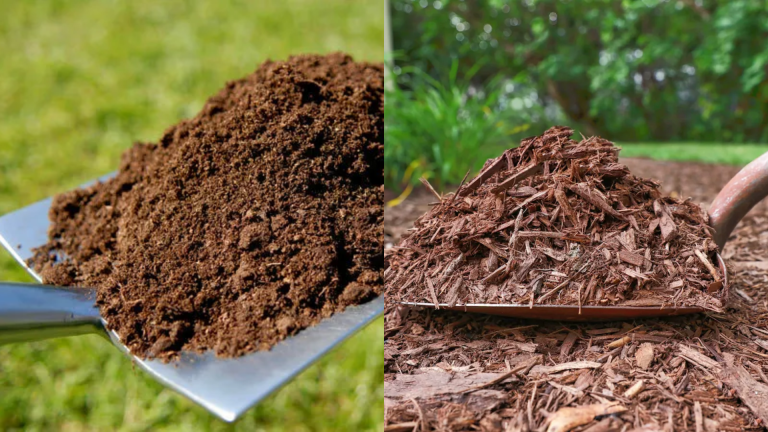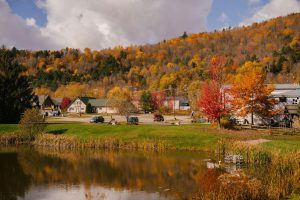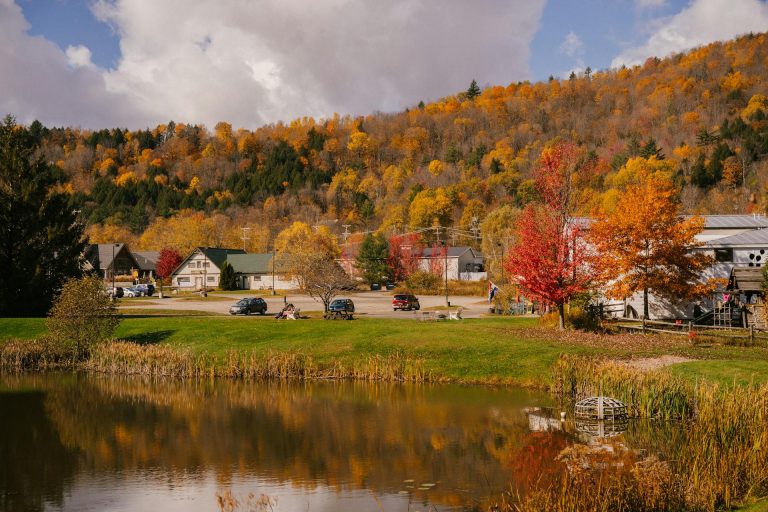If you’re starting a garden or working on your yard, you might wonder—what’s the difference between topsoil and mulch? They both help plants grow, but they’re used in different ways. Knowing when to use each one can make your garden healthier and save you time and effort.
Topsoil is the rich, dark soil where plant roots grow best. It’s used for planting, filling low spots, and starting new lawns or garden beds. Mulch, on the other hand, sits on top of the soil. It helps keep water in, blocks weeds, and protects plants from heat and cold.
In this guide, we’ll explain what topsoil and mulch are, how they’re different, and when to use each. Whether you’re a beginner or just need a refresher, this easy guide will help you make the right choice for your garden.
Understanding Topsoil and Mulch
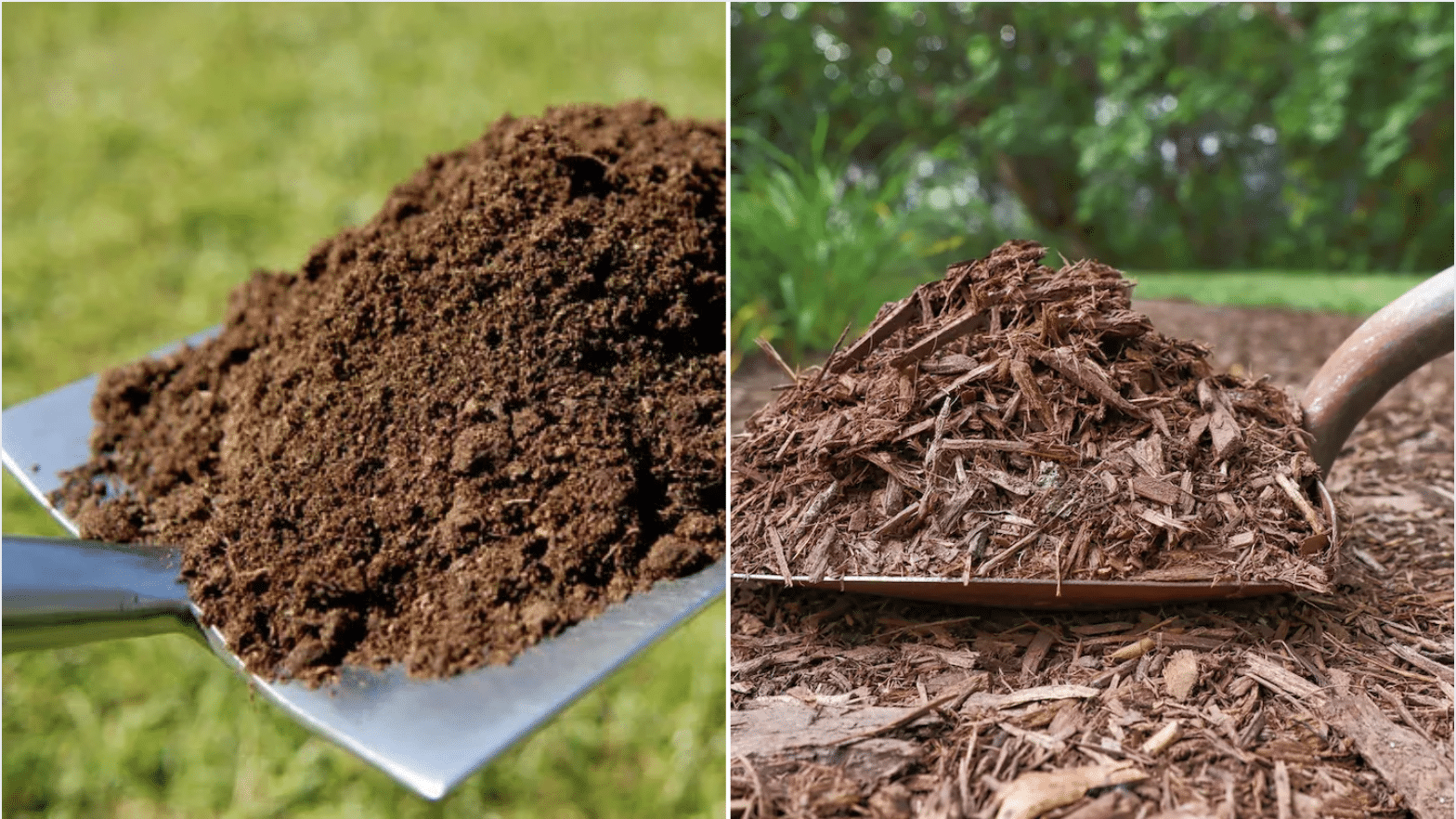
Topsoil and mulch are both essential for a healthy yard or garden, but they serve different purposes. It’s easy to mix them up, so let’s break it down in a simple way.
Topsoil is the top layer of soil where plants grow. It’s rich, dark, and full of nutrients that roots need. Gardeners use topsoil when they want to grow something new, fill in holes, or level the ground.
Mulch is a material you spread on top of the soil. It doesn’t grow plants, but it helps protect the soil underneath. Mulch keeps the ground moist, stops weeds, and helps plants stay healthy in hot or cold weather.
Think of topsoil as the bed your plants sleep in, and mulch as the cozy blanket that keeps them safe. Both work great—just in different ways!
Differences Between Topsoil and Mulch
Topsoil and mulch may look a little alike, but they’re used in different ways.
| Topsoil | Mulch |
|---|---|
| Goes under the plants | Goes on top of the soil |
| Plants grow in it | Plants grow under it |
| Feeds roots with nutrients | Protects soil and holds moisture |
| Fine and soft like regular soil | Chunky, made of wood, bark, or straw |
| Used to plant grass, flowers, and veggies | Used to block weeds and protect roots |
| Gets mixed into the ground | Just spread on top—no mixing needed |
So remember: topsoil is what your plants grow in, and mulch is what keeps the soil around them safe. Both help your garden, just in different ways!
When to Use Topsoil vs Mulch
Not sure whether you need topsoil or mulch? Don’t worry—it’s easy once you know what each one does. They both help plants, but they’re used at different times and for different reasons.
Use Topsoil When
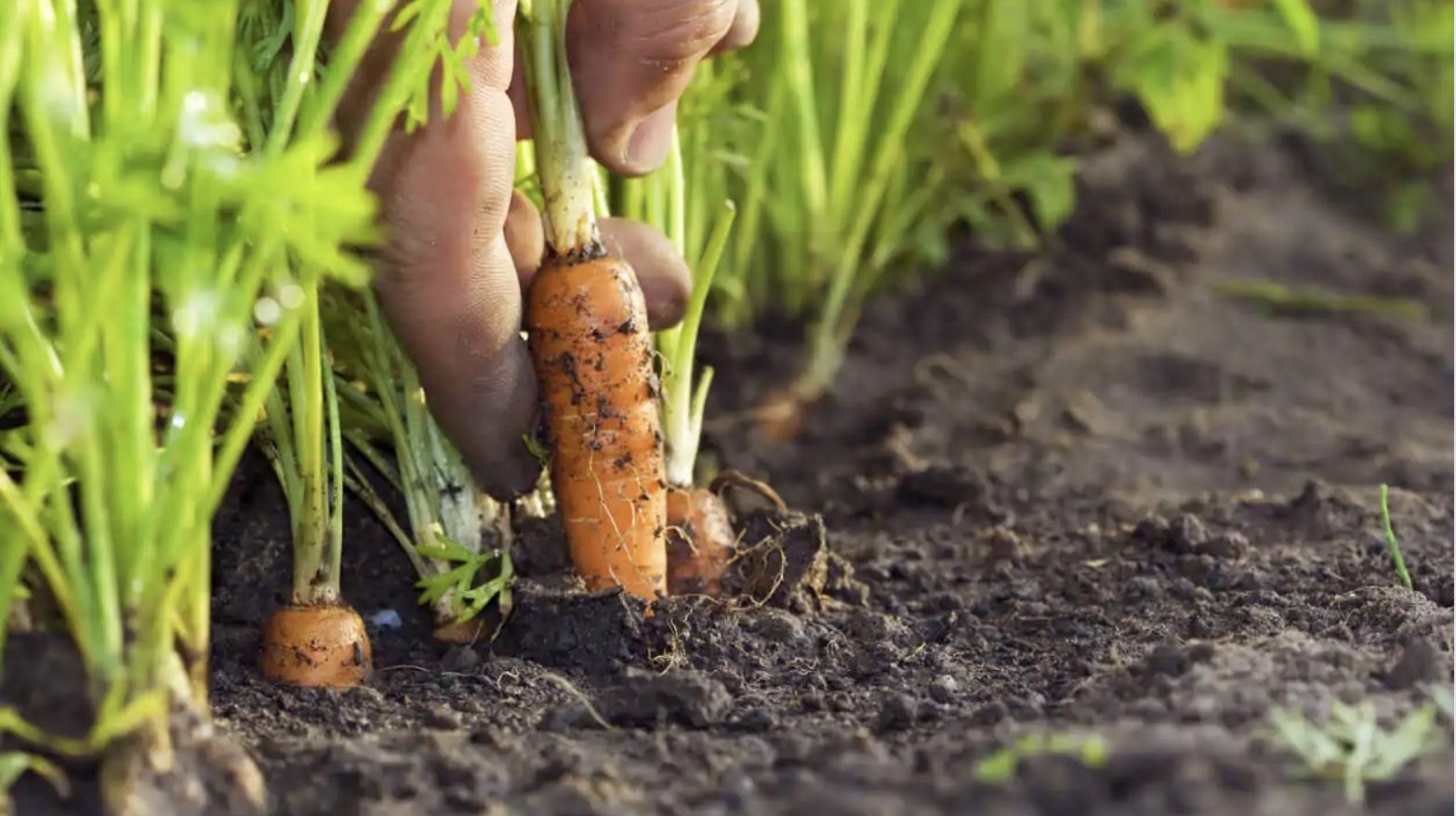
Topsoil is the base your plants need to grow well. It’s full of nutrients and helps roots spread and stay strong.
- You’re planting grass, flowers, or vegetables: Topsoil gives seeds and young plants a soft, rich place to grow. It holds water and nutrients, which helps plants sprout faster and grow healthier.
- You need to fill in low spots in your yard: If your yard has dips or uneven spots, topsoil can level things out. It smooths the surface and makes mowing easier too.
- You’re building a raised garden bed: A raised bed needs good, healthy soil to support your plants. Mixing topsoil with compost is a great way to fill the bed and feed your garden.
- Your current soil is dry, thin, or of poor quality: If your ground is hard or sandy, adding topsoil can help improve it. It makes the soil softer, richer, and easier for roots to grow through.
Topsoil provides your plants with a strong foundation and a healthy environment to develop deep, strong roots.
Use Mulch When
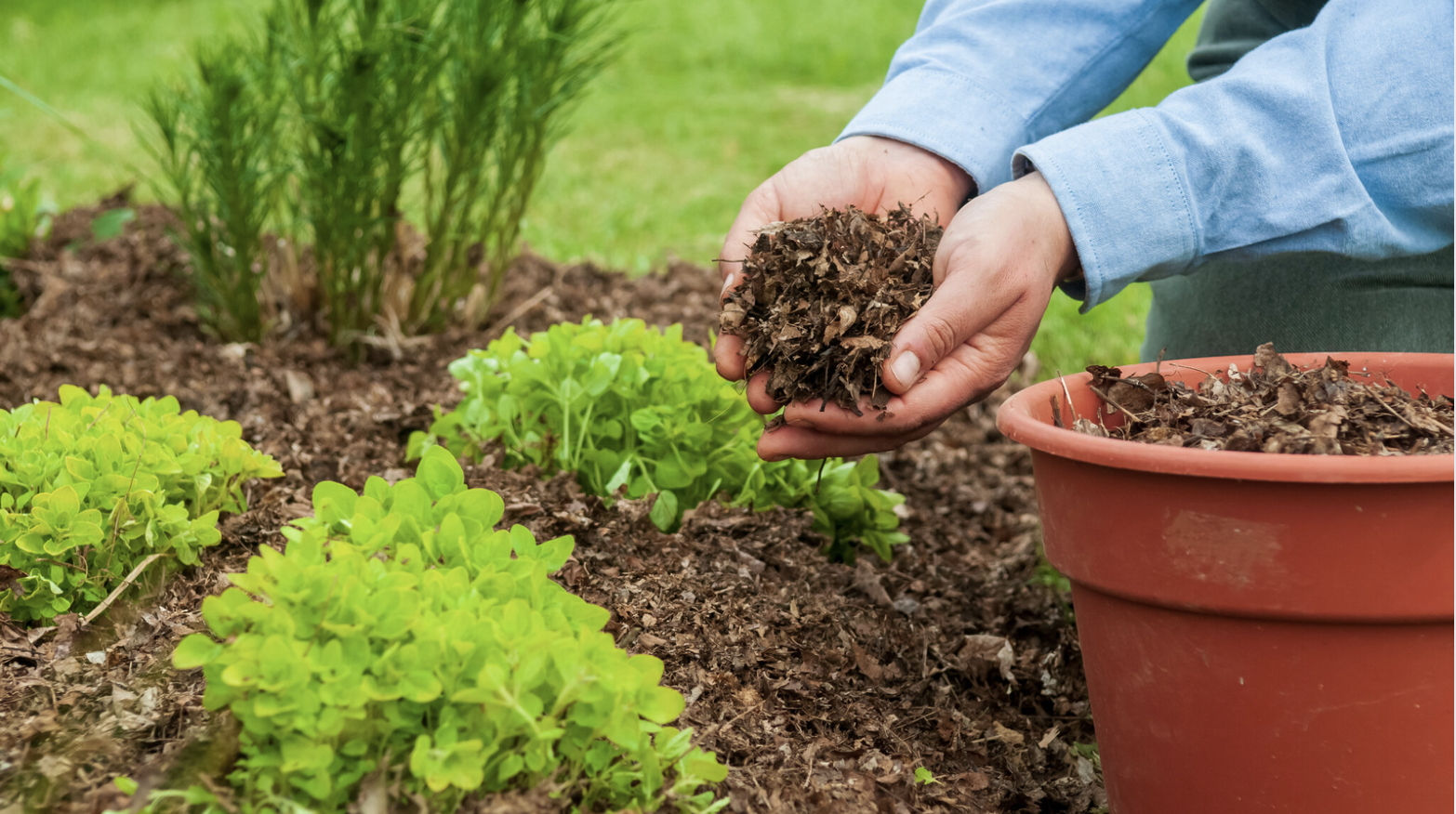
Mulch acts like a protective blanket for your soil. It doesn’t feed the plants directly, but it helps keep the ground healthy and safe.
- You want to stop weeds from growing: A thick layer of mulch blocks sunlight, which makes it hard for weeds to pop through. This saves you time and keeps your garden tidy.
- You need to keep the soil moist in hot weather: Mulch slows down evaporation, so the water stays in the soil longer. That means less watering and healthier plants in the summer.
- You want to protect plants from cold or heat: Mulch acts like insulation. It keeps the soil warmer in the winter and cooler in the summer, helping roots survive tough weather.
- You’re adding a finishing touch to garden beds: Mulch gives your garden a clean, polished look. It hides bare soil and helps tie everything together.
Mulch doesn’t grow plants, but it helps protect the soil and keep your garden looking neat and tidy.
Topsoil helps your plants grow, while mulch helps protect them from the elements. Use both methods correctly, and your garden will stay healthy and thriving!
Types of Topsoil and Mulch
Not all topsoil and mulch are the same. There are different types, and each one works best in different situations. Choosing the right kind can help your plants grow better and make your yard look great.
Types of Topsoil
- Screened Topsoil: This topsoil is sifted to remove rocks and sticks. It’s soft and easy to work with, great for planting.
- Unscreened Topsoil: Rougher and may have clumps or debris. Best used for filling holes or leveling ground, not for gardens.
- Blended or Enriched Topsoil: Mixed with compost or other organic matter. It has more nutrients and is perfect for garden beds or raised beds.
Types of Mulch
- Wood Chips or Bark Mulch: Made from tree bark. Great for flower beds, trees, and pathways. Lasts a long time.
- Straw or Hay Mulch: Light and easy to spread. Works well in vegetable gardens but breaks down faster.
- Compost Mulch: Adds nutrients while covering the soil. Helps improve soil health over time.
- Rubber or Rock Mulch: Doesn’t break down, so it’s low maintenance. Good for pathways or decoration, but not for planting beds.
Each type has its own use, so pick the one that fits your garden’s needs best!
Mixing Topsoil and Mulch
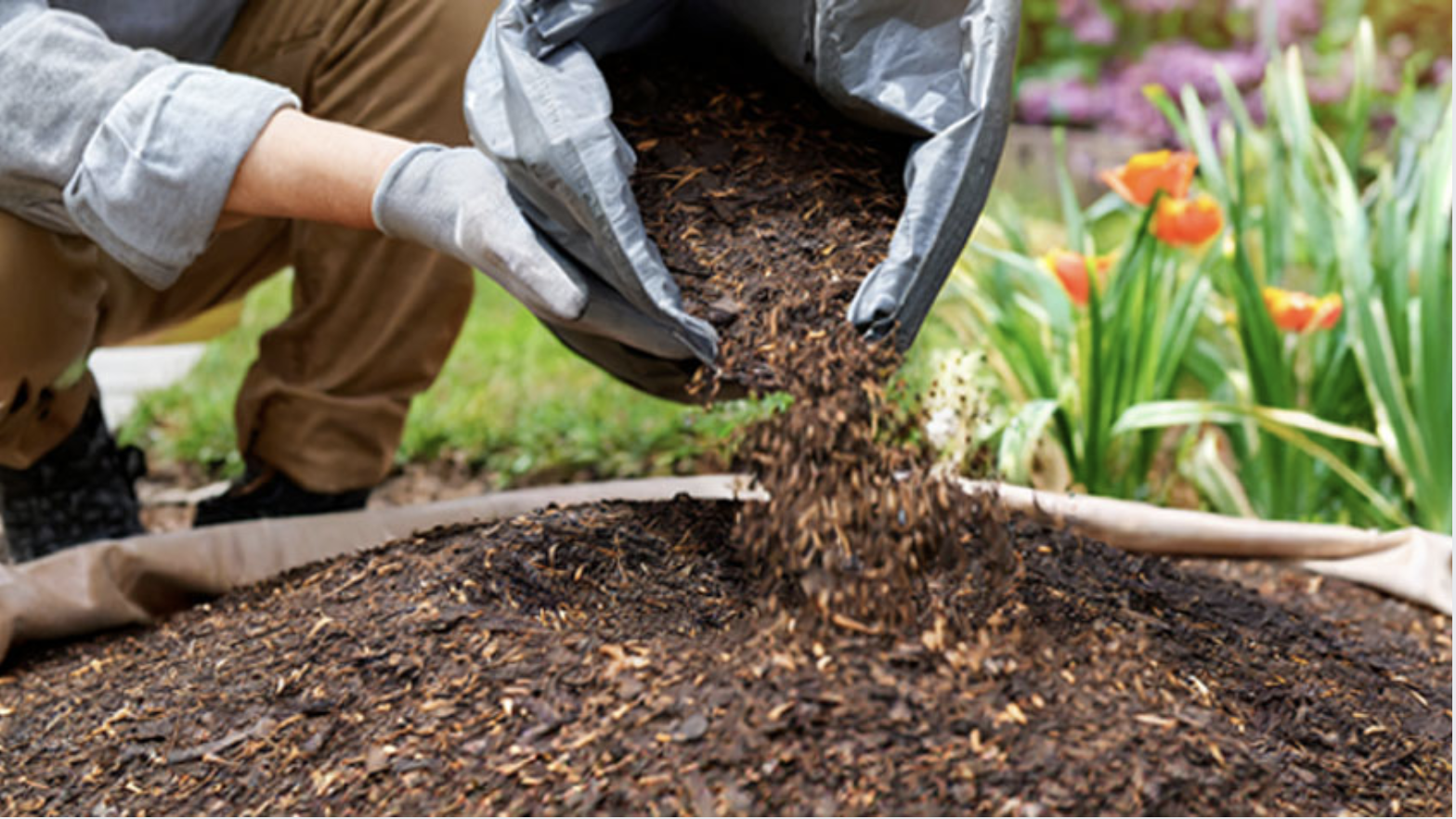
You can use topsoil and mulch together, but they should be used in the right order. Topsoil goes on the bottom, and mulch goes on top. This way, the plants get the rich soil they need to grow, and the mulch helps keep the soil moist and protected.
Don’t mix mulch into the soil where you’re planting. Mulch is meant to stay on top. If you mix it in, it can block water or take nutrients away as it breaks down.
Here’s the best way to use them:
- First, add a layer of topsoil where you want to plant.
- Plant your seeds or flowers.
- Then, gently spread mulch on top of the soil—about 2 to 3 inches thick.
Used together, topsoil and mulch make a great team for a healthy garden.
Topsoil vs Mulch: Which Is Better?
So, which is better—topsoil or mulch? The truth is, it’s not about one being better than the other. Topsoil and mulch do different jobs, and both are important for a healthy garden.
Topsoil helps plants grow by providing them with essential nutrients and a soft, hospitable environment for their roots to spread. Mulch, on the other hand, protects the soil by keeping it moist, blocking weeds, and keeping temperatures steady.
If you’re planting, start with topsoil. To protect and care for the soil, add mulch on top. When used together, the right way, they make a great team!
Common Mistakes to Avoid
Using topsoil and mulch is easy, but a few common mistakes can slow down your garden’s growth. Here’s what to watch out for:
- Planting directly in mulch: Mulch is not meant for planting. Always plant in topsoil, not in mulch.
- Using mulch instead of topsoil: Mulch helps protect the soil, but it doesn’t give roots the nutrients they need to grow.
- Piling mulch too high: A thick layer can trap excessive moisture, causing plant roots or stems to rot. Keep it 2–3 inches deep.
- Mixing mulch into the soil: Mulch should stay on top. Mixed-in mulch can steal nutrients as it breaks down.
Avoiding these mistakes will help your garden stay healthy, happy, and growing strong all season long!
Conclusion
Topsoil and mulch may seem similar, but they each play distinct roles in helping your garden thrive. Topsoil is what plants grow in—it’s full of nutrients and gives roots the support they need.
Mulch goes on top of the soil. It keeps the ground moist, stops weeds, and protects plants from heat and cold. Knowing when and how to use each one can make a big difference in your yard.
When planting grass, flowers, or vegetables, begin with topsoil. Once your plants are in, add mulch to help them stay healthy. Don’t mix them up or use one in place of the other—they work best when used together.
Whether you’re building a garden bed, fixing your lawn, or adding the final touch to your flower beds, using topsoil and mulch correctly can help your entire garden thrive.


